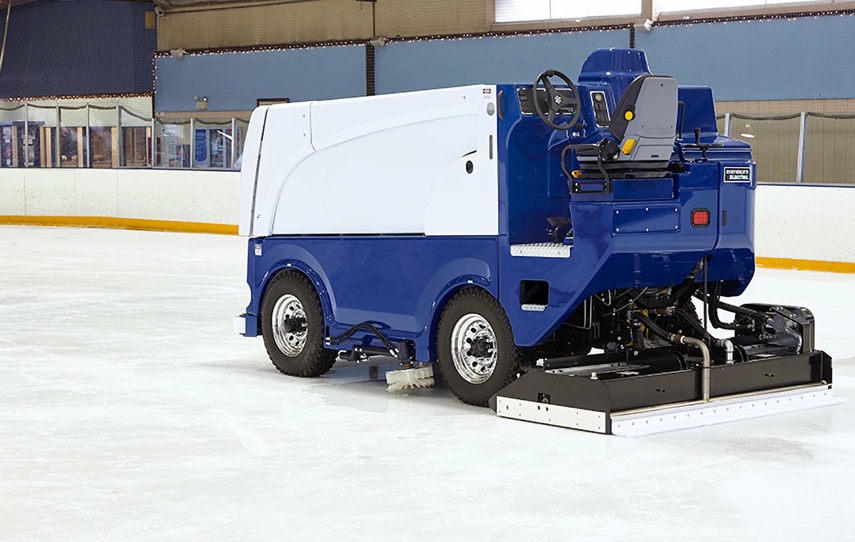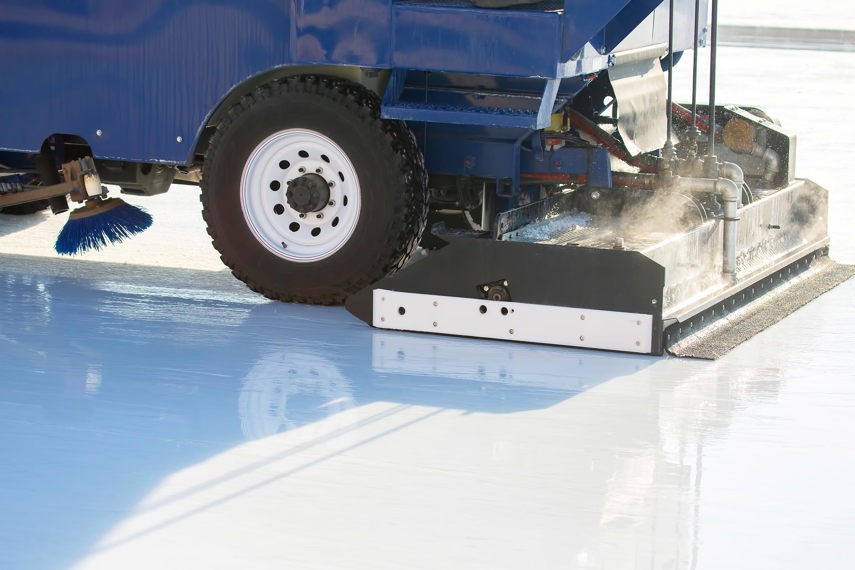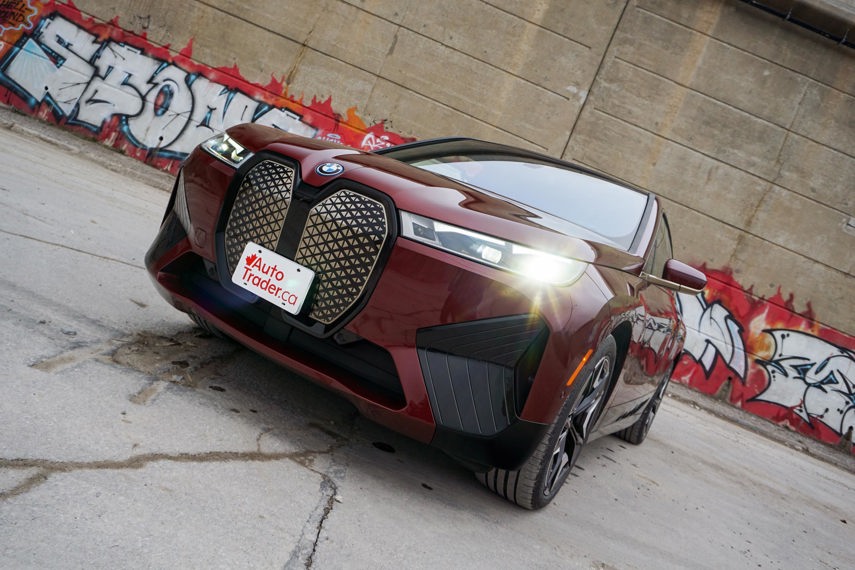It crept up on me in a way no vehicle that weighs around five tonnes should – not that it was completely silent, but the crunching and crackling sounds were certainly deceiving.
There’s something a little unnerving about such unfamiliar sounds approaching from behind, not least of all when you happen to be walking alone. That the temperature was so bitterly cold and the wind biting so sharply on this frigid February day only added to the general discomfort of the situation.
As I whipped my head around – well, it was more of a full torso turn thanks to the freezing cold – I found myself staring at a familiar sight for a Canadian kid who grew up around the corner from the local hockey arena: the disarming (and dull) front end of a Zamboni. But this wasn’t any Zamboni – it was an all-electric one, and it’s changing the way the ice is resurfaced in Mississauga, Ont., and beyond.
Electrify Everything

I’m excited about electrification, and you should be, too – and not just because it’s coming whether you like it or not. The reality is the pros outweigh the cons as the auto industry has settled on its zero-emissions strategy, with all manner of possibilities opened up through electrification. As Ralph Gilles, Chief Design Officer for Stellantis, told us on a recent episode of the Own the Road with AutoTrader podcast, performance and packaging potential are both heading in exciting new directions under full-scale electrification plans.
Of course, those are secondary to the need to reduce harmful emissions in a hurry. And while passenger vehicles like the cars, trucks, and SUVs we all drive are an important part of that strategy, often lost in casual conversation is the need for government and commercial fleets to do the same. That’s where the City of Mississauga’s so-called “green fleet” policy comes in – a plan that includes the electric Zamboni that crept up behind me that afternoon outside Iceland Arena.
As the city looks to cut its greenhouse gas (GHG) emissions by 40 per cent by 2030, moving to a fleet of low- and zero-emissions vehicles is key. In the case of the first eight Model 650 electric Zambonis the city introduced over the last couple years, the yields have been almost immediate while the transition has been easy. That’s according to Michael Blazenko, Operations Supervisor with the city’s recreation department, who has spent the better part of the last 18 years working out of Iceland Arena.
“There’s no difference driving between the natural gas and the electric – it’s just how quiet it is when you’re on the ice,” says Blazenko.
As someone who started with the city as a Zamboni operator, Blazenko is about as authoritative on the subject as they come, and he says there’s no discernible difference to running electric ice-resurfacing machines compared to the older internal combustion ones – not when it comes to the job itself. But he’s impressed with the difference they’re making when it comes to emissions reduction.
A Special Drive

To assume I was excited to get the good news that I’d been authorized to test-drive the Zamboni myself would be a gross underestimation. No, I wasn’t allowed to run the ice resurfacing system itself; the folks in charge knew better than that. But I was curious to know what it was like to sit up tall on the back end of a modern version of the machine I had watched in awe so many times growing up.
I steered clear of the boards to avoid the machine’s natural blindspots, but it was a unique thrill to press the pedal and go atop a machine that’s changing the ice in more ways than one. With two electric motors – one that drives the wheels and another that runs the equipment – and the better part of a Toyota Corolla Hatchback out front, it’s unlike anything I’ve ever driven before, electric or otherwise. The pumps, augers, and ice-maker sound louder than they would with an internal-combustion machine, but it’s all tantamount to white noise as the studded tires claw into the ice.
It’s heavy, with all the electrical equipment adding nearly 2,000 kg (4,409 lb) compared to a similar gas-powered model; and it’s not getting anywhere in a hurry. But it’s certainly smooth, while the fact it’s electric means it can be brought to a halt without hitting the brakes – simply let off the throttle and it’ll slow down on its own. With a 40.8-kWh battery pack, it’s estimated each machine can manage about 25 resurfacing jobs between charges. With charging taking between 10 to 12 hours, they can be hooked up overnight just like a personal electric vehicle (EV).
Final Thoughts

There was a certain irony that came with showing up to our April meeting at Iceland Arena behind the wheel of the all-electric BMW iX – a happy coincidence that provided an interesting cross-section of two important sides of the future of electrification. While there’s no doubt that electrifying passenger vehicles is critical, so is it to do the same with the vehicles that keep our communities moving.
For Blazenko, the day also brought some perspective to something he’s done countless times before: driving a Zamboni. Seeing the joy it brought to my face – as well as AutoTrader Editor-in-Chief Jodi Lai’s – was humbling, in a sense. It’s easy to take for granted something so simple that you see and do every day. But when that action is on the forefront of positive change, it’s something we should all be excited about.

